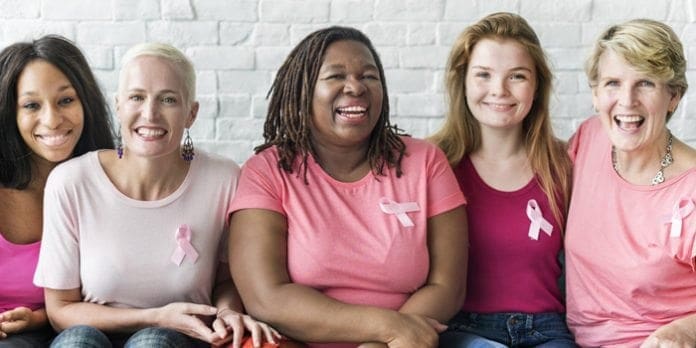A vigorous exercise program such as fast cycling or running could reduce the risk of breast cancer by as much as 17 percent. Eating less saturated fat and drinking less alcohol also could help. These are steps all women can adopt to protect themselves against breast cancer. Taking action to stay safe becomes even more important when you recognize your vulnerability. Estimates say that more than 250,000 American women will receive breast cancer diagnoses this year. Some communities are more at risk than others. The latest research that explains who may be hit harder is fascinating. Read on to protect yourself.
You may be born with DNA that increases your chances of developing breast cancer. Taking little steps, however, can make a big difference. You have control over what you choose to eat and how much you choose to exercise. Just how much of a difference can those choices make to your breast cancer risk? Plenty. One recent study found that one drink a day could increase a young woman’s risk by 5 percent.
“Everyone wants a magic pill. People don’t want to change,” says Christine Benjamin, breast cancer program director at Share Cancer Support network. “But this is the only thing that’s entirely in your hands. So we focus on tiny little steps with our patients: eating in moderation, meal prep, gradually increasing your fitness.”
Hispanic women have rates of breast cancer about 30 percent lower than white women. Studies say that on average they eat less red meat and more plant-based protein. They also drink less alcohol. Those findings lead some experts to conclude diet may play a role.
Yet black women younger than age 35 are twice as prone to develop breast cancer as their white counterparts, and the disease is more likely to claim their lives. Experts are still researching the causes. Many factors contribute, including genetics and lifestyle choices. More access to improvements in breast cancer treatment play a role, according to experts. One who calls the gap in care “shocking and unacceptable” Is Marc Hurlbert, Ph.D., chief mission officer at the Breast Cancer Research Foundation.
Death rates for white women have fallen faster since the 1980s when breast cancer mortality rates for white and black women were roughly the same. Today black women with the disease are 43 percent more likely to die from it. The gap widened as top hospitals in affluent areas began to offer new screenings, new surgery, new chemotherapies, new targeted drugs,” says Hurlbert.
Research advocacy hotlines in your area to find a doctor who specializes in patients like you and is knowledgeable about advances in breast cancer treatment. Finding a doctor who understands your situation is crucial. Many Planned Parenthood clinics can offer services at a reduced cost.
Read More: Every Woman Needs to Read These Lessons About Breast Cancer







